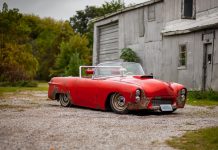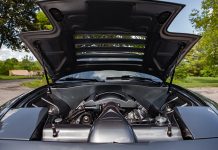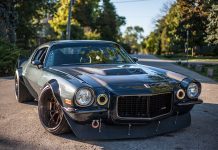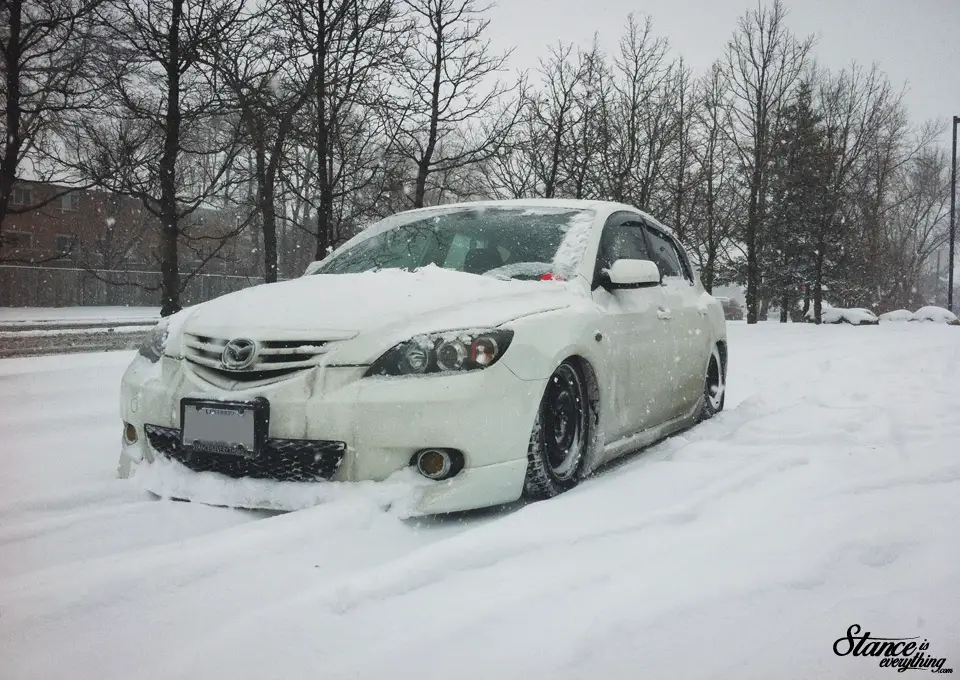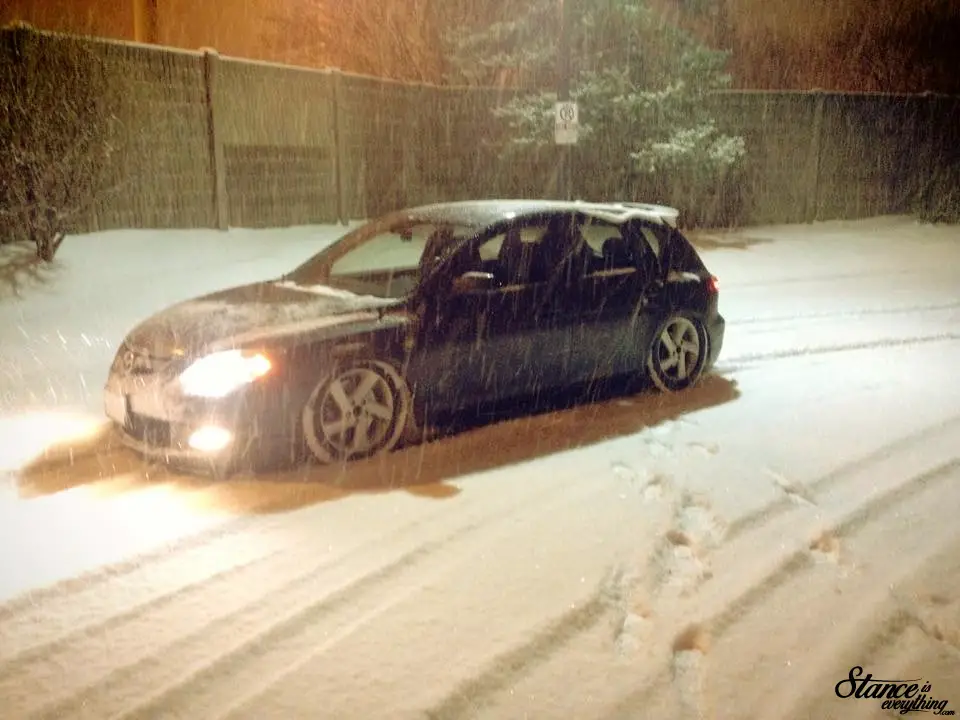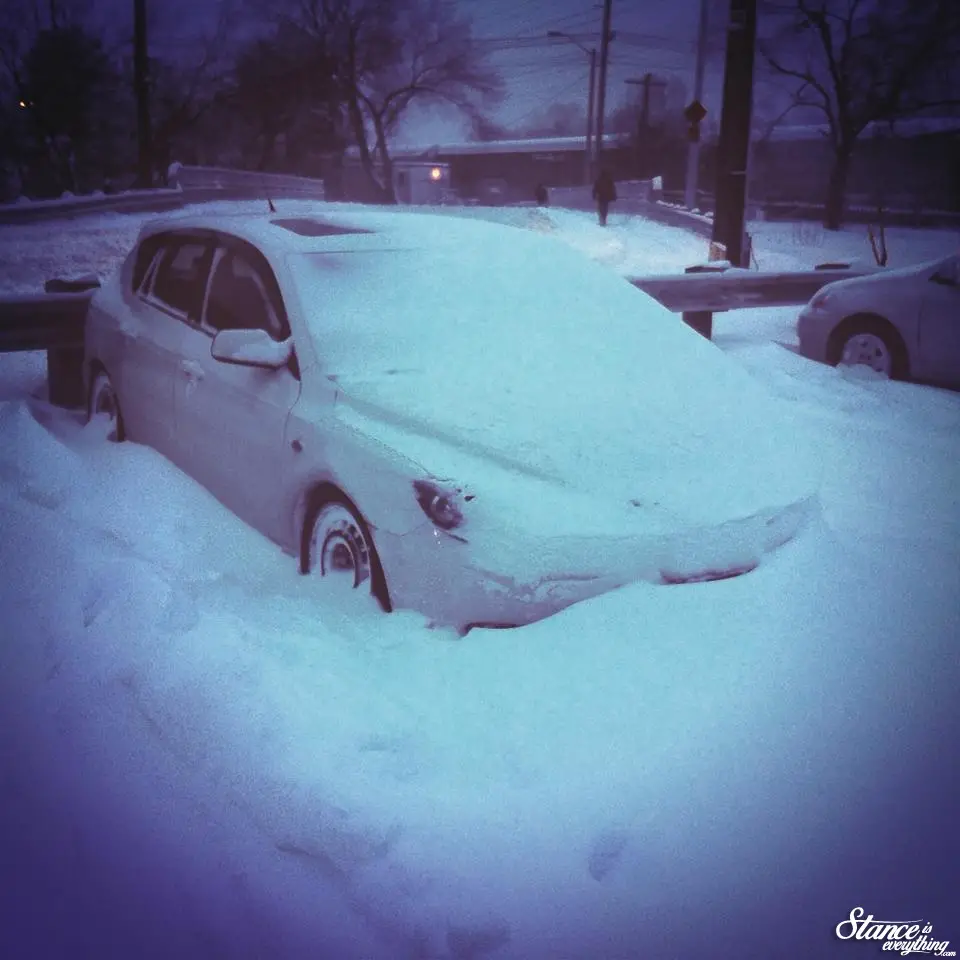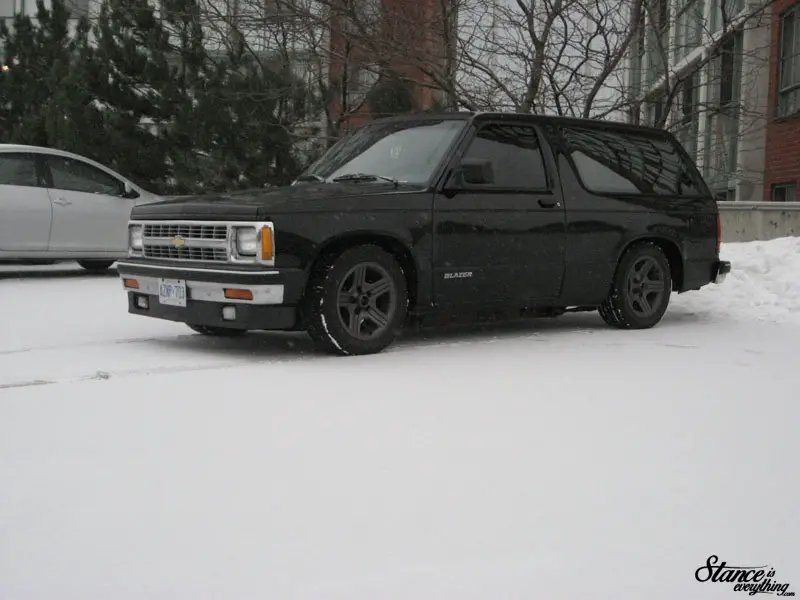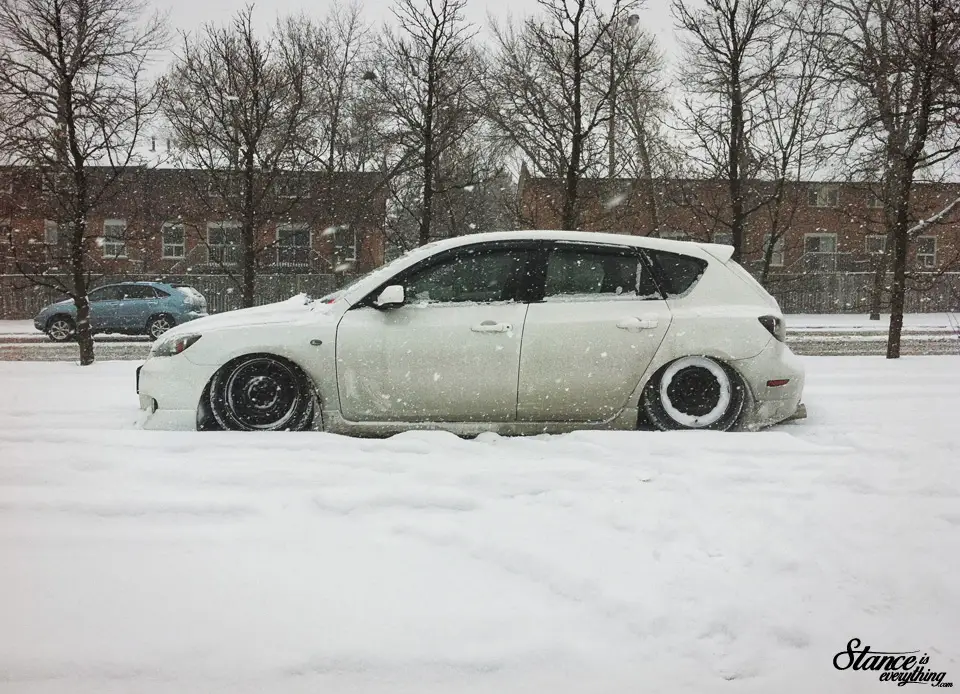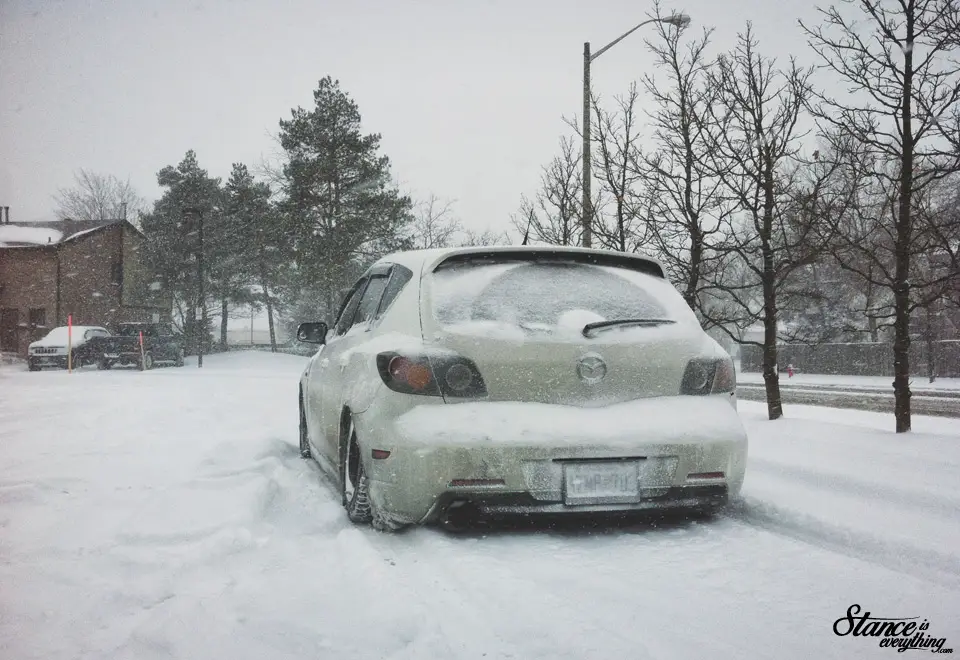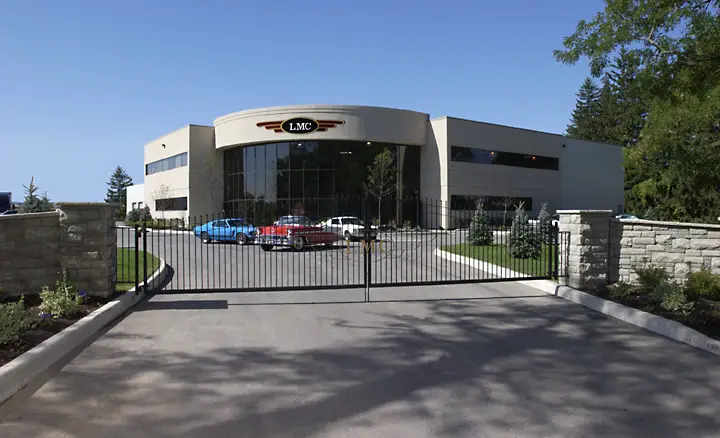Unlike many people who drive modified cars until I very recently I’ve never had the opportunity to own something that wasn’t a daily driver, nor have I ever had a winter beater.
This means every car I have owned has been driven year round without fail. This includes a rear wheel drive European sedan (e30), a vehicle insurance classified curiously as a sport wagon (Blazer), and two front wheel drive cars (3/Speed3).
Keeping all of these shiny side up, and structurally sound in the rust prone climate of Ontario takes a bit of forward thought and preparation and today SYLVANIA Canada has asked me to share a few of the methods I use to plow through the snow unscathed in the winter.
Lighting
Seeing ahead of you in any weather condition is important, but absolutely imperative in the winter and all of my sealed beam cars have run SYLVANIA bulbs. I can’t remember exactly which on the e30, but the Blazer used Silverstars and my wife’s car, which doubles as the support vehicle for my car, uses SYLVANIA units.
Last year she used zXE headlights that were reviewed here, and this year she will be using SilverStar ULTRA headlights which will be reviewed later this month.
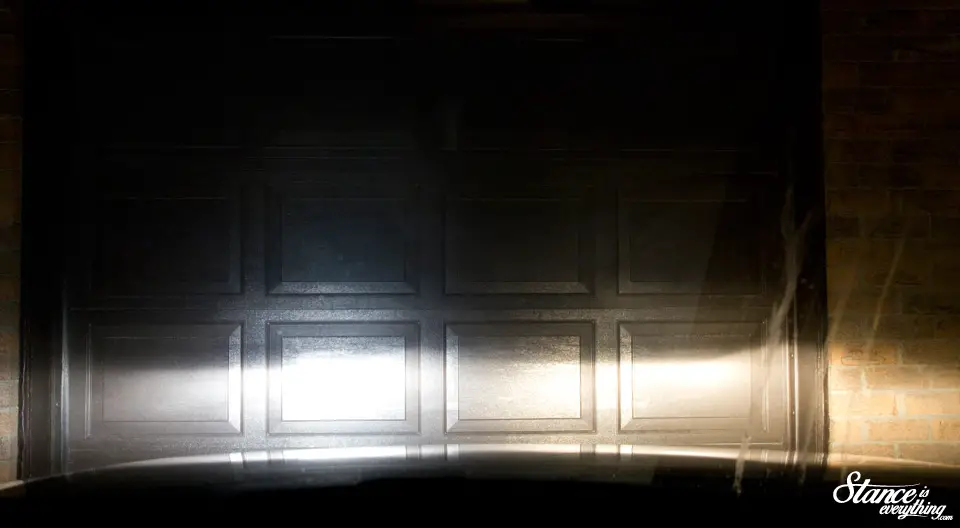
Of course whatever lights you do choose to use keeping them free of snow is a huge help. Don’t be lazy and hope the snow will blow off as you drive because in most cases it will just blow up over the hood and into the wind-shield creating your own personal white out experience.
Staying Low
When I was static I had quite a few people ask me if I raised my car for the winter, or further still removed my coil overs, for the winter and the answer to both was of course no.
To me paying to remove and reinstall your suspension every six months is a significant waste of money, doing it yourself is equally a waste of time. The GTA is plowed fairly quickly which means aside from avoiding the occasional ice crater dropped off by a big truck riding low isn’t the biggest issue.
Of course conquering the mountains met by plows can be a bit of an issue but I don’t think any car I’ve owned would have conquered those at stock height so often it’s just easier to go around or shovel it out-of-the-way.
If the streets are not plowed I’ve found the best way to prevent getting stuck is keeping your moment up and smooth driving inputs at all times.
Keeping coil overs adjustable through the salty season is a bit of work however so at the end of both the fall and winter I would clean the threads of the coil overs with a wire brush to get all the road grime off.
Then I would spray the assembly liberally with white lithium grease. After giving the grease a moment to penetrate I would loosen the lock rings and spray on more grease before tightening everything back up and calling it a day. Using this method I managed to keep my BC coilovers from seizing during my ownership and the person who purchased them from me used the same method to keep them working in the years following.
When it comes to air my steps are even simpler, since I have no intentions of adjusting my air struts from the factory Air Lift Performance settings I just give them a quick spray and keep them lubbed.
As far as the air system itself, every month I drain my tank of condensation and that’s it. I thought about running air line anti freeze a few years ago but now three years into it I’ve never had much issue without it so I’ve forgone it.
My old VIAR check valve did freeze once or twice but I’ve since upgraded it to a beefier SMC unit and never had a problem.
Traction Control
While people who drive around stock height might be able to get away with all seasons I’ve found that if you drive low –and if you are reading this I assume you do– a good set of winter tires are worth their weight in gold. Despite my vehicles reduced ground clearance with a good set of winter tires, and competent use of the rocking method, I was able to free myself from the situation below without so much as a single shovel throw.
I’ve seen people dissuade others from using older BMWs year round runabouts but equipped with a limited slip differential and a solid set of winter tires my e30 was essentially a tank all winter and a lot of fun.
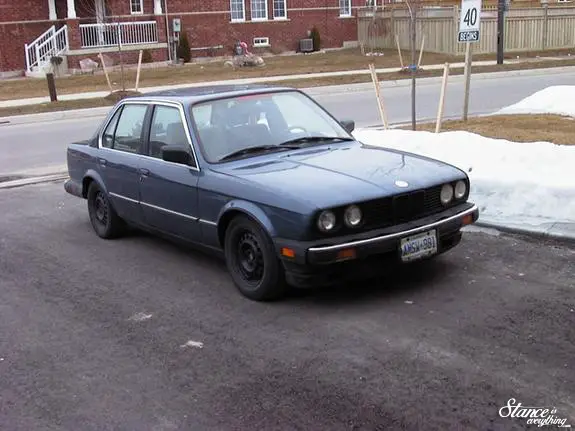
On the flip side my Blazer had all seasons and an open diff one winter when I was a little strapped for cash and was miserable in the snow.
Since the Mazda3 chassis is front wheel drive forward traction is generally a non issue but that doesn’t mean all seasons are the way to go. In any drive configuration stopping is critical and that’s perhaps the most beneficial area of winter rubber, especially if you’re in a car without ABS or and older unpredictable (Blazer again) ABS system.
For the last four or so seasons I’ve run tires from Hankook’s Winter ipike (Available at Canadian Tire) quite successfully. When it comes down to alloy wheels or steelies for the winter I’ve run both.
Steels are cheaper and run less risk of leak causing corrosion but alloys do look quite a bit better.
Keeping the Shiny Side Shiny
Perhaps the number one reason most enthusiasts don’t drive through Ontario winters is our over zealous use of salt and its effect on our vehicles metal work. The fact that Ontario becomes a salt lick for at least six months of the year rapidly speeds up how fast cars here rust and is a thorn in the side of any enthusiast.
Rust proofing is something I have done every year to every car I have owned without fail. I’ve used both Canadian Tire’s Rust proofing and Krown’s rust proofing to equal success.
I also grab a can of Canadian Tire’s Rust Check spray and protect to use on my fenders and quarters once a week and after every wash. If I run out I use good old industrial grease until I can pick up a new can.
As far as washes go I’m of mixed opinion on what is best. I used to go broke and wash my vehicle every week in the winter, but the past three years or so I’ve slowed down to about every month (depending on salting) and I have not noticed a significant detriment to my vehicle. Some say this approach is better as it drives less road salt into the unseen cavities of your car, others say it is worse because the salt sits on your car longer. I can’t decide either way.
Another preventive measure I take is touching up every visible paint chip before winter using rust primer, or por-15 where necessary, along with colour matched touch up bottles or colour matched spray paint.
It certainty means more time spent in the garage during the winter switch over but it truly helps.
If you drive a domestic, Honda or Toyota you can get colour matched paint right from Canadian Tire using their Perfect Match selection. If you don’t have one of those vehicles I’ve had success at Cawthra Automotive and I’ve heard Napa and some CARQUEST locations provide the same service as well.
If the rust looks to be getting too far gone I’ve bit the bullet and got proper patch panels welded in. I’d rather do it once and do it right then fill it with body filler and do it every season.
Common Sense
The last, and perhaps most important tip I can give around winter driving is common sense. You should use it and assume other people are not in the winter. Any-time snow is on the ground I give people copious amounts of space because you can never quite tell if someone will come down with the dreaded snow induced driving skill amnesia.
Winters can be long, cold, and harsh but it’s a reality for us Canadians so hopefully this post helped you out a bit and can keep your car in one piece through many winters to come!



